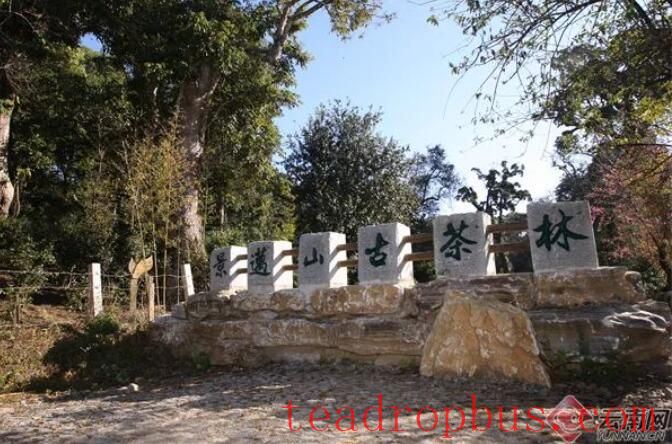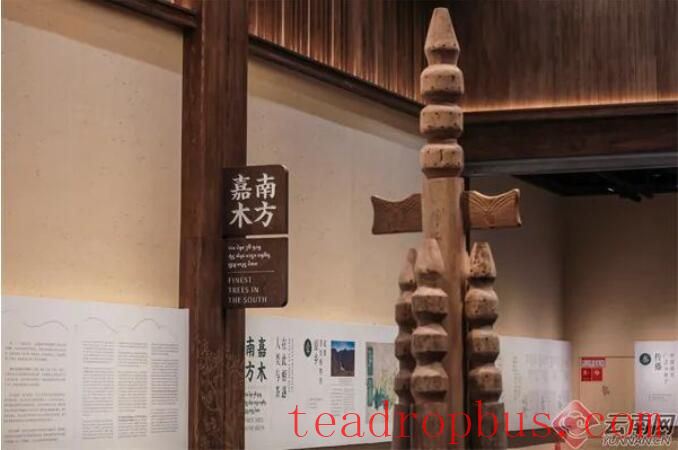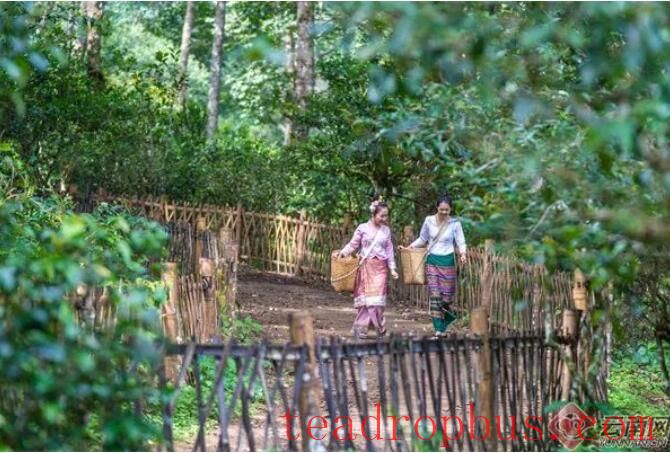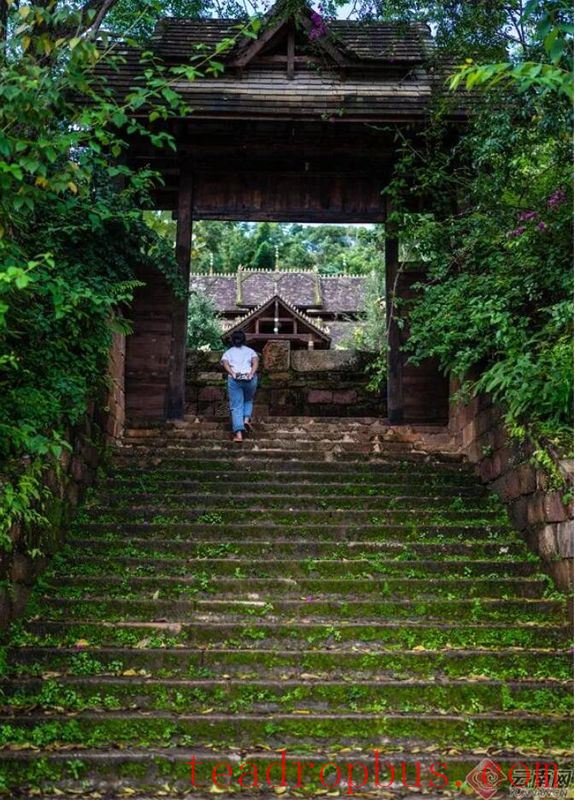The 45th enlarged meeting of the UNESCO World Heritage Committee was held in Riyadh, the capital of Saudi Arabia. Among the 50 proposed projects for consideration, the Ancient Tea Forest Cultural Landscape of Jingmai Mountain in Pu'er was the only project submitted by the Chinese government to be reviewed and listed in the World Heritage List!
The heritage elements of Jingmai Mountain include five ancient tea forests, nine traditional villages, and three dividing protective forests. Let's delve into Jingmai Mountain together to learn about the story of a “community of life” between mountains and forests, grass and trees, plants and insects, tea and people, and explore this unique “joint creation of nature and humanity” themed around tea.
Protection of the Southern Fine Trees

Following National Highway G214 southward, the Ancient Tea Forest Cultural Landscape Exhibition Center is located on the road leading into Jingmai Mountain in Humin Town, Lancang County, Pu'er City. Many visitors who come to Jingmai Mountain choose this as their first stop. Here, we can glimpse the past and present of the “southern fine tree” – the tea tree – and feel the ancient tea forest cultural landscape of Jingmai Mountain that has formed over thousands of years through a symbiotic relationship between forests and tea and the co-prosperity of people and tea.
As the world's first project to apply for World Cultural Heritage status with a theme of Tea culture, the ancient tea forest cultural system of Jingmai Mountain has been well preserved thanks to joint efforts from all sides. The continuous thread of tea's human and historical legacy on Jingmai Mountain flows endlessly along the Nanlang River and Nanmen River at the foot of the mountain.

Museum
For thousands of years, the indigenous peoples of Jingmai Mountain have remembered the ancestral teachings of the tea forefathers and continued the tradition of growing and protecting tea passed down through generations. They have spontaneously developed a set of community rules and regulations specifically targeting the protection of the ancient tea forests, such as prohibitions against the use of fertilizers and pesticides within the ancient tea forests, destructive harvesting practices, and the planting of other crops. Violators face penalties ranging from fines to being placed on a blacklist of dishonesty.
In comparison to the self-organized “agreements” formed by the community, local government departments have taken legislative measures to elevate the protection of ancient tea trees to new heights.
To protect Jingmai Mountain, the local government worked jointly with Peking University to complete the writing of the Nomination Document, comprehensively sorting out the value of Jingmai Mountain as a World Cultural Heritage site and laying a solid foundation for the application. The local government revised and improved 27 regulations and rules for the protection of ancient tea forests, including the Pu'er City Ancient Tea Tree Resources Protection Regulations and the Implementation Measures of the Lancang County Jingmai Mountain Protection Regulations. These regulations provide a reliable guarantee for the legal, scientific, and standardized management and protection of the ancient tea forests of Jingmai Mountain, ensuring its sustainable development.
In the four centers dedicated to the World Heritage nomination of the ancient tea forest cultural landscape of Jingmai Mountain, there are 19,000 documents prepared for the nomination, filling an archive room nearly 100 square meters in size.
Working Together to Enhance the Reputation

Tea Picking
Jingmai Mountain has successively been recognized as a Global Important Agricultural Heritage Site, included in the seventh batch of “National Key Cultural Relics Protection Units,” the “List of Traditional Villages in China,” and designated as a National Forest Park. The consensus among the residents of Jingmai Mountain is to develop while protecting and protect while developing.
The process of applying for World Heritage status for Jingmai Mountain has been ongoing for 13 years, with staff changing regularly, but the goal has become increasingly clear. Everyone understands that “doing subtraction on the mountain and addition off the mountain” is the future for Jingmai Mountain. Protecting the ancient tea forest cultural landscape on the mountain enables the development of cultural tourism industries off the mountain without compromising conservation efforts.

More importantly, Jingmai Mountain has established a dynamic protection system involving community participation and professional consultation. In terms of community participation, following the model of “Party organization + base grid + households,” “groups working together” have been established to achieve “self-development and self-management,” allowing villagers to organize and participate in heritage protection as families. For professional consultation, heritage protection institutions collaborating with local governments provide long-term training to heritage management bodies and communities, jointly establishing a multi-level, multi-dimensional management system involving consultations among various parties.
“The application for World Heritage status is people-oriented, and during this process, we aim to maximize the benefits for the people while minimizing intervention,” said a relevant official from the Ancient Tea Forest Conservation Administration Bureau of Jingmai Mountain. “Over the years, both the residents and tea enterprises have been very supportive. We hope to polish the reputation of Jingmai Mountain even brighter.”
Through joint efforts, Jingmai Mountain remains unchanged in its essence, with greener tea and more charming ancient villages.
Planners: Luo Rongchan, Zhang Cheng, Li Xingquan, Wu Jun, Zhao Jiaqi
Text: Zhang Cheng, Luo Rongchan
Photos: Zhang Cheng, Liu Chang, Chen Simeng, Xia Xintong